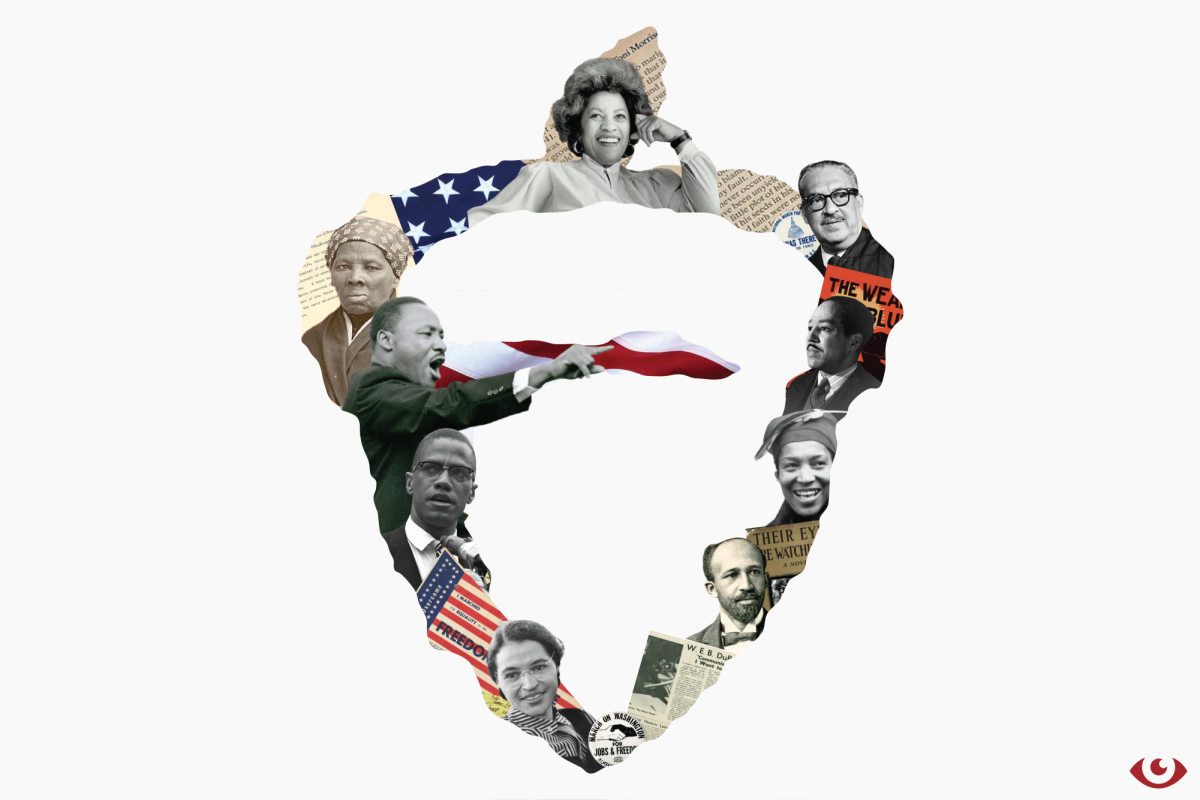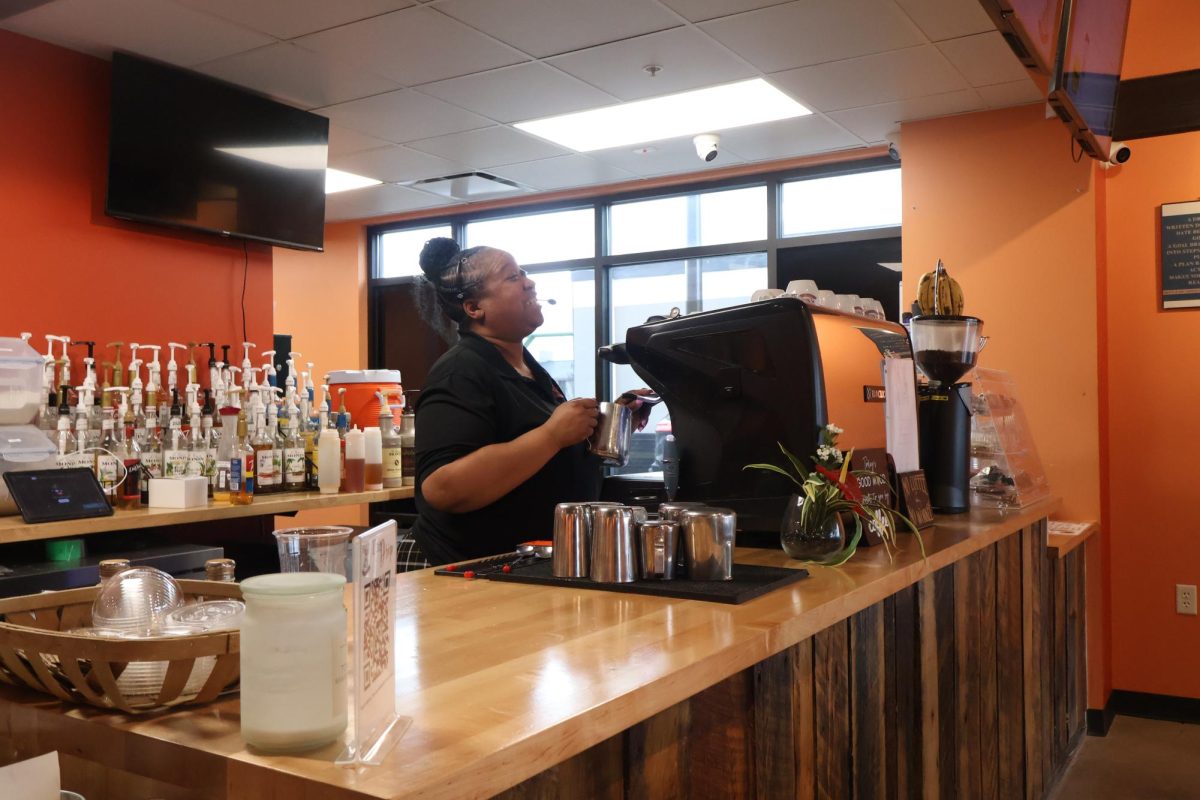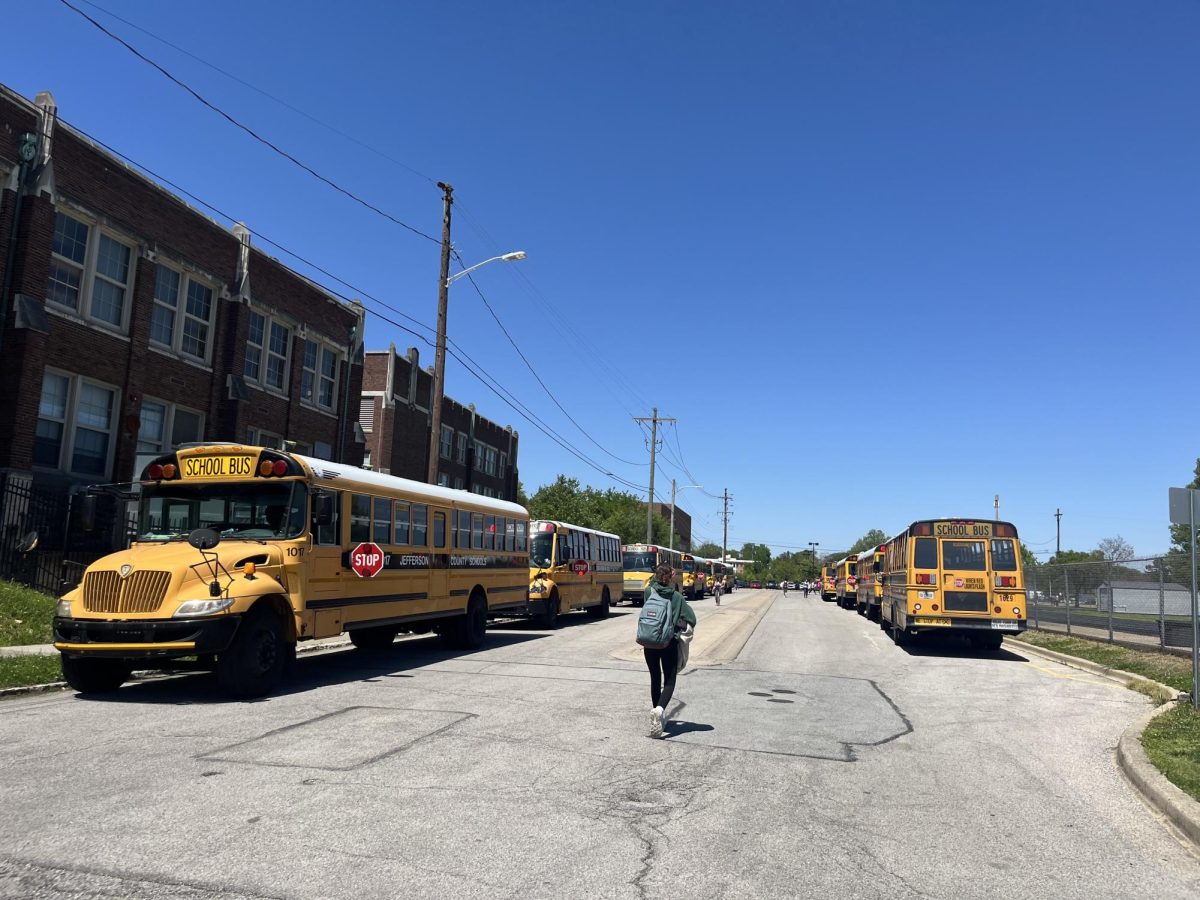It took hours for police and school officials to break up a conflict at duPont Manual High School on Nov. 10, 1976. The altercation, which originated in the cafeteria and spread through the hallways, left 16 students injured, eight arrested for inciting a riot and 30 others suspended. For the rest of that week, police cars were stationed around the school, and more than half of students stayed home.
This riot was not a random occurrence. It was sparked by high racial tensions that were the result of a Supreme Court order that forced Jefferson County Public Schools to integrate their schools in 1975. A chaotic, alphabetical busing system was put in place to transport students across the county in order to create the necessary racial balance. Protests often turned violent, and the National Guard was called in to protect buses as they pulled into school parking lots. The riot on Nov. 10 was the culmination of these tensions at Manual.
After a few years, however, protests in the county began to die down. While most other school districts around the nation decided to abandon integration plans, JCPS continued to pursue programs that attempted to create a more integrated school environment. Today, it is one of the only districts in the nation that still buses students among urban and suburban areas.
The 2007 Supreme Court case Parents Involved in Community Schools v. Seattle School District No. 1 declared that students cannot be assigned to schools based on race. In response, JCPS created an alternative plan to continue integration using minority and socioeconomic status.
The district is now divided into clusters, which combine students from different regions. Students can attend any “home school” in their cluster, but they must apply to a school in a different cluster.

This busing plan benefits some low-income students by exposing them to higher-achieving schools. A Harvard study concluded that the integration of JCPS prepares students for the workplace because they are exposed to a variety of backgrounds.
JCPS is now considered one of the most integrated districts in the nation. The racial makeup of JCPS in 2015 was 47% white, 36% black and 16% latino or other, according to the JCPS Board.
Despite Louisville’s efforts to integrate, segregation remains a huge problem in the city. Louisville is the 4th most segregated city in America, behind only Cleveland, Detroit and Milwaukee. 51.1% of Louisville residents live in segregated areas, and 9th Street is generally regarded as the dividing racial line.
Most of this segregation has its roots in white flight and housing discrimination. When suburbs were built in Louisville in the 1950s, there were federal housing laws restricting the sale of property from white people to black people as well as U.S. government policy preventing minorities from moving into majority-white neighborhoods.
After this was outlawed, the Home Owner’s Loan Association began a practice called “redlining” in which they ranked neighborhoods and districts based on “security level” where majority-white neighborhoods were marked green and majority-black or other minority areas were designated red. Affordable loans and other financial benefits were then denied to those living in the “red” districts, another effective tool to keep Louisville and other cities segregated.
Then, during Louisville’s “urban renewal” era, urban areas were bulldozed and black residents were forced to move into traditionally white neighborhoods such as Shawnee. When the minority population started moving in, the white population began fleeing in droves. This is still seen today, as well as housing inequality in Louisville’s West end. Areas where the majority of people are non-white are devalued, and white majority neighborhoods increase in value. This creates a gap between white people and people of color that may prove difficult to close.










Gerri Monsour • Feb 10, 2017 at 5:44 am
Outstanding article Hunter! Thank you for the reminder. I think people forget how far we’ve come!